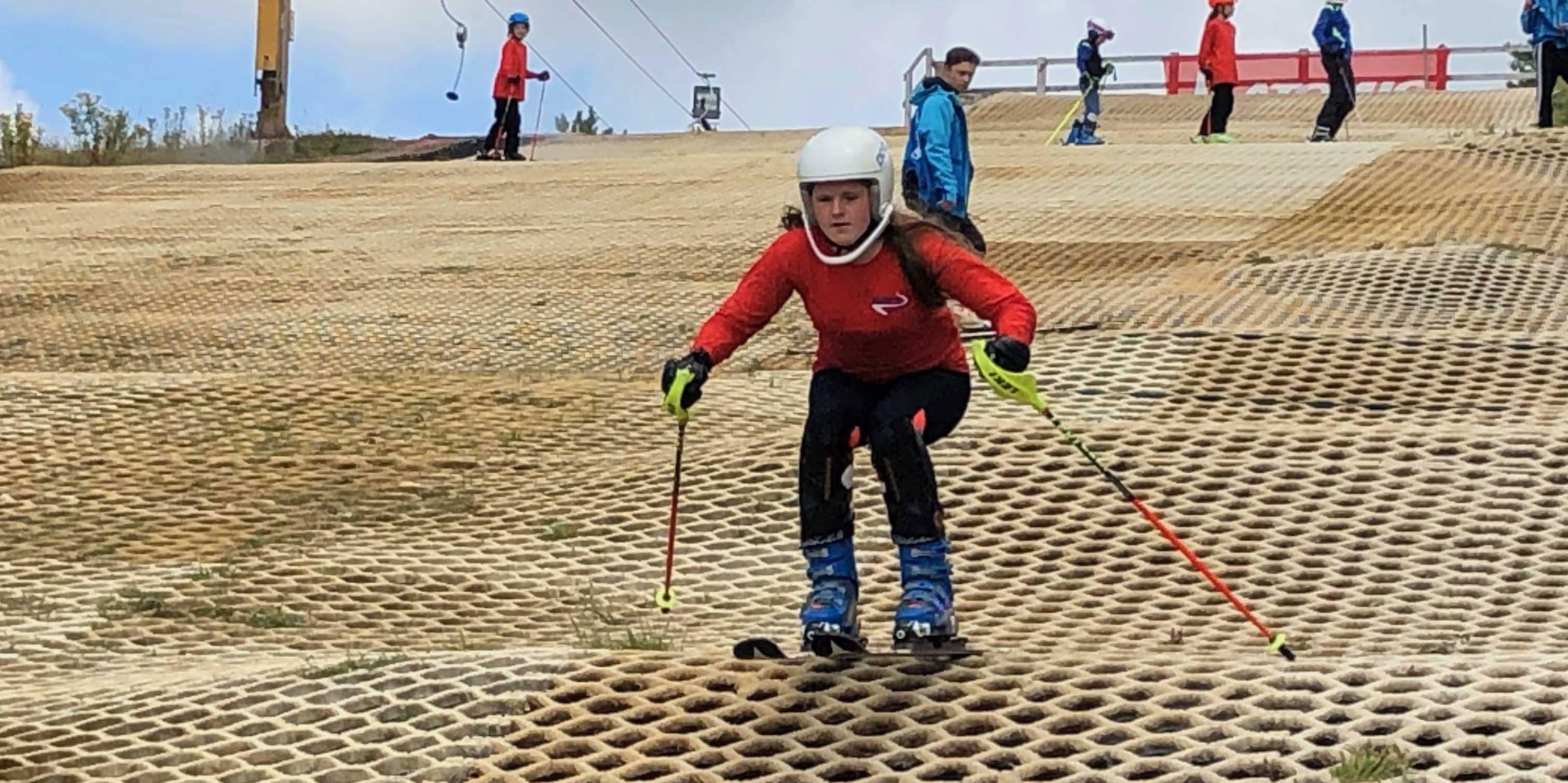
3 minute read
WHAT IS RACE TRAINING?
WHAT IS
RACE TRAINING?
For those that enjoy skiing gates, and racing, whether it be in the UK on plastic, indoor snow or in the mountains, the feeling of ‘slapping plastic’ in slalom or getting a shoulder to a GS gate on snow can be exhilarating.

We have many parents or teachers who come to us saying ‘our kids need to ski gates’. However, in most cases, these children actually need more work on their fundamental skiing outside the gates before any course work and we try to educate people to this case as changes and improvements are made more quickly and permanently with more technical training before taking the changes into the course.
Build the Skier to Create the Racer
In our training organisation, we have a tagline ‘Build The Skier – Create The Racer’ and this is key to improvement as too much time skiing gates will slow progression as the skiers are, in the main, not focussed on their skiing but on such things as completing the course, hitting the gates, or even just staying upright and this is really not a great way to get better.
Essentially, effective race training is focussed coaching. Training through poles can be part of it but actually improving skiers takes place outside the poles and mainly on terrain conducive to the trainee/client to build confidence and ensure effective movements. Repetition of effective movements is also important to make any positive change permanent.
As we learn or develop in anything, we go through stages of skill acquisition and these need to be understood by the coach in order to effectively develop anything that is movement or skill based. How many of you have been learning something and, as soon as you show success at one stage, you are swiftly moved on to the next stage, perhaps feeling as if you haven’t really mastered the previous movement or skill?
Practice Time
Sufficient practice time once a movement is learned in order to consolidate that movement and develop it to become intrinsic in your skiing is something that can often be missed in the pursuit of a skiing goal. The same applies across the board with sports. Only when the skier and coach are satisfied that progress is being made and the movements are happening with consistency, do we look at putting this into the course. This can be a great indicator of how the training is developing and if improvements are being consolidated. It can also go the other way and putting obstacles in the way can cause the newly learned movements to be ‘dropped’ in favour of surviving but this is one of the gauges of improvement.
Youtube etc. is full of videos of World Cup skiers performing slow, precise drills outside the course. They do this on glaciers and indoor ski halls through the summer and autumn.
The challenge of skiing the poles is, for sure, a great buzz for many skiers and it’s important to have some runs in the course to just enjoy it and prepare for races.










